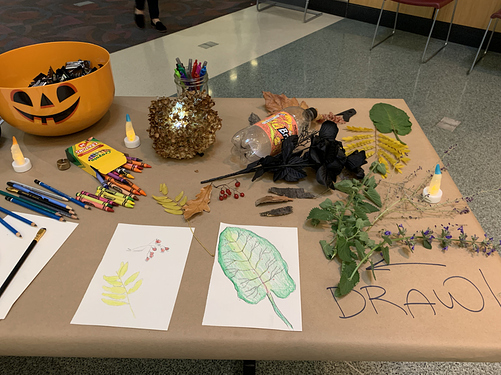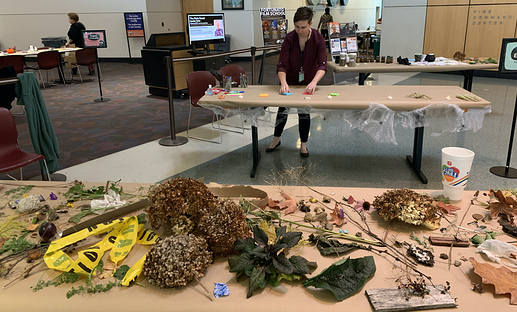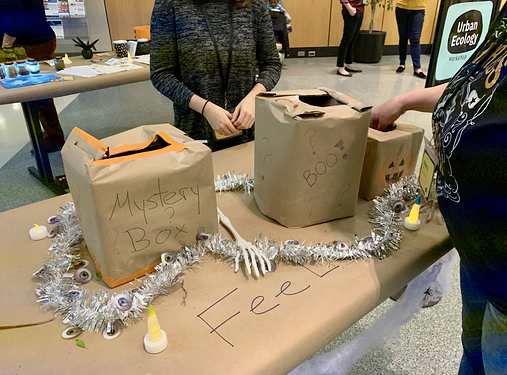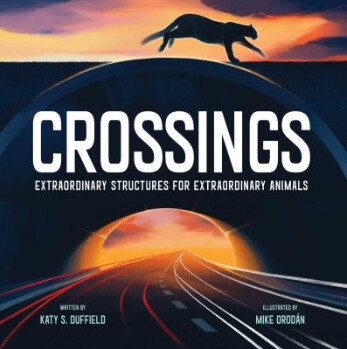I wanted to share a few ways to take the structured activities from the PLIX Urban Ecology series and remix them them for more flexible, drop-in style events.
The examples below were created with an amazing team of librarians as part of our PLIX@Akron Workshop, which concluded with a Spooky Maker Night (hence the Halloween spin!). These drop-in activities can be tailored to other happenings in your library, like a climate week or a maker faire!
Urban Nature Sketching
Lay out some materials for sketching, and encourage patrons capture life (or non-life) through drawing!
Prep Time: 15 Minutes (including time to objects)
Materials:
- Objects collected from outdoors: leaves; bark; rocks; litter
- Colored pencils and crayons
- Sketch paper
Soil Shake Station
Allow patrons to perform soil shakes with samples from around the library grounds! It’s useful to have a number of jars that have already-settled soil layers as examples for demonstrating sand, silt, and clay. I suggest also having the Feeling & Soils zines on display, so patrons can learn a bit more about soils and the separation they are observing!
An optional addition: we put together a cardboard box with small LED flashlights inserted so that the soil shakes could be illuminated (showcased in the photo above)!
Prep Time: 20 Minutes (including time to collect soils)
Materials:
- Small jars with tight-fitting lids
- Various soil samples
- Optional: flashlights
Community Sorting
Perform an interactive group sort! In our Spooky Maker Workshop, we had one table FILLED with a wide array of abiotic (nonliving) and biotic (living) components, and another nearby table where those components could be placed with a category of the patron’s choosing (written directly on the butcher paper or on a sticky note). Over two hours, we had a ton of different categories to sort our found objects into (ranging from “fluffy” to “has seeds that disperse” to “high degradation time”).
Prep Time: 20 Minutes (including time to collect)
Materials:
- Table outfitted with butcher paper
- Markers
- Sticky notes
- Wide range of objects collected from outside
Feel Boxes
Have patrons play a guessing game! We made three “mystery feel boxes”. One full of soil, another housing a large, dried hydrangea, and one with a skeleton hand 
Prep Time: 15 Minutes (including time to collect)
Materials:
- Cardboard boxes
- Butcher paper
- Markers
- Collected objects or artifacts
I’d love to hear any thoughts or feedback you have on these remixed drop-in activities for Urban Ecology! How would remix these activities? I’d also love to hear about how you envision these drop-ins fitting into your library’s programming or offerings. Let’s discuss!




